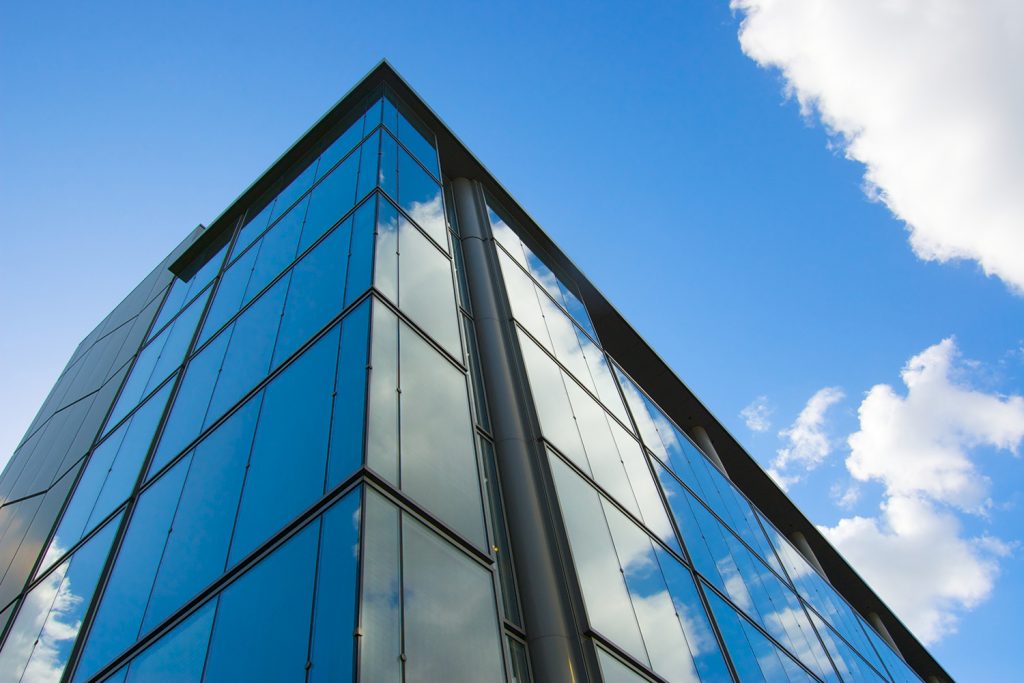Protect Your Interior from UV Rays
Available in reflective and non-reflective
We consolidated our three service offerings here for quick access and additional information. Solar window films are transparent films that are applied to flat glass, designed to reject up to 99.9% of the UV rays and are available in various shades & colors. A quality solar film product will reject a large percentage of heat, glare, & UV rays. Depending on conditions & aesthetic needs, solar films are available in reflective (mirrored) or non-reflective (natural) versions ranging from very dark to nearly invisible.


Dyed window films come in various colors & configurations. Sometimes it’s constructed with 100% dyed materials or added with metal coatings for improved heat reduction. There are good quality dyed films from reputable manufacturers that only sell direct to dealers & there are what we would consider to be low quality films that are generally available for online purchase. It’s difficult to know what you are getting online for DIY’s, low visual clarity, uneven and premature discoloring of the product are dead giveaways.
Above we mentioned using a dyed material along with a reflective film, when we talk about ‘traditional’ reflective films we simply are stating that the products are constructed mainly with metal materials. They are extremely efficient in reflecting the sun’s energy & are predominantly retrofitted to East, South & West facing glass panels on very large commercial buildings. The costs are on the lower spectrum so quicker ROI’s are attractive. It’s also installed to small commercial buildings & even some residential projects to the window panels not facing the curbside.
This is what started it all for us in 2001. When Huper Optik contacted us to introduce the world’s first ‘ceramic’ based window film we were thrilled & excited. CSI was the first company in Los Angeles to introduce Ceramic Window Film Technology. What we realized immediately was that not only were these products a perfect fit for the corrosive beach environment but even the darker versions had a undeniable ‘clarity’ to them. Their impressive solar energy rejection properties were just icing on the cake. Today we offer many other ceramic films to address all types of budgets including the original patented 2 ply Ceramic by Huper Optik.
Reflectivity can be a big issue for some because the suns light reflects off ‘most’ (more about this below) metal materials in our industry. Our Dual Reflective products have the same concept as a dyed film over reflective but with a more color stable high quality construction. They are great for those of us that need to reject a lot of the suns heat and glare throughout the day but require a ‘Clear View’ during the nighttime. The name itself is counterintuitive & confusing because it implies it has two reflective sides (that would be our standard films) when it actuality it has only one reflective side usually facing the exterior surface of the glass. Usually the side facing the interior of the room has a ‘lower’ reflective property. So it’s possible to have the best of both worlds. There are Dual Reflective film options in our standard line of films too, the difference is in the quality, performance & warranty. Popular use for day time privacy
Sometimes you need to dig for gold & silver to get the results you need! Instead of using typical metal compounds like aluminum or steel to reflect the sun’s energy these premium films get the job done in a way that’s practically invisible to the naked eye. By incorporating precious metals the result is unsurpassed efficiency & light transmittance, if this is your preference, although darker versions of this premium class of film exist for better glare control. By rejecting an exceptional amount of energy without the visible light reflecting back at you along with lower absorption rates, this is the secret sauce. In contrast to other less efficient low reflective window films on the market that ‘absorb’ the direct sun’s energy that may cause unforeseen issues like thermal glass breakage.
You may be thinking precious metals sounds expensive, there is some truth to this, it’s our most costly offering, it’s not for everyone. For example if ‘fade control’ was your #1 goal then maybe a slightly more shaded product would work best in this situation. From our observation & recommendation over many years we have preached that the sun’s visible light does more damage to furnishings than what industry standards suggest. Since spectrally selective films are designed for high visible light transmittance this fact alone would disqualify our recommendation as a choice for optimal fade protection. Most of our customers hire us to protect their heirlooms & such from premature fading and our goal is to always fit you with the best product on the market for your particular circumstances. So it’s also true that you don’t need to automatically spend extra money to get the best results, isn’t that a relief?
In summary, our premium line of films are best suited for those that require the absolute abundance of light to enter a room while rejecting the highest amount of heat from the sun. If fading isn’t much of a concern then this is probably an excellent fit for your project. Be sure to ask us for a demonstration during our zero cost consultation at your home or facility as we generally have all the professional meters readily available.
Clearview Sun Control, Inc.
811 N Catalina Ave. #2300
Redondo Beach, CA 90277